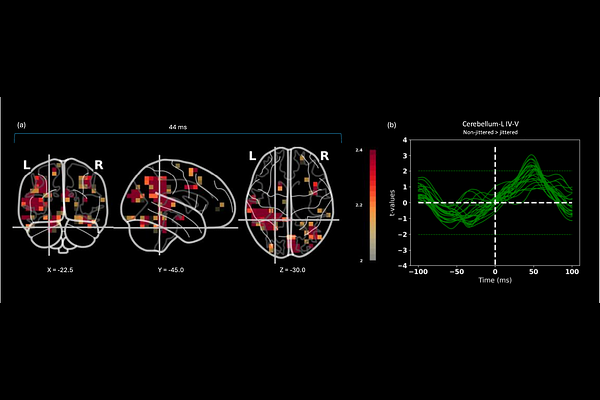Somatosensory timing and cerebellar-basal ganglia beta-band interactions in Parkinson's disease

Somatosensory timing and cerebellar-basal ganglia beta-band interactions in Parkinson's disease
Pando-Naude, V.; Andersen, L.
AbstractParkinson\'s disease has traditionally been viewed through the lens of basal ganglia dysfunction, yet emerging research also implicates the cerebellum and its connections to the basal ganglia. To probe cerebellar and basal ganglia responses, we used a somatosensory timing paradigm, while recording magnetoencephalography. Beta-band (14-30 Hz) activity was of special interest, as we have shown that it is relevant to timing in the cerebellum. Parkinson\'s disease participants and controls were presented with tactile stimuli in non-jittered or jittered sequences, with the last on-time position of the sequence being omitted to probe prediction-related processes. We find prediction-related differences in the cerebellum and the basal ganglia before the omissions, but no differences in cerebellar evaluation responses after the omissions. In Parkinson\'s disease participants, basal ganglia activity favors jittered sequences over non-jittered, whereas the reverse is seen in the controls. Moreover, the alterations in cerebellar beta-band responses correlate with symptom severity in Parkinson\'s disease participants. Finally, we find an interaction in functional connectivity within a sensory-integration network between the two participant groups and the regularity of the stimuli. We interpret these findings as indicating that the cerebellum may play a compensatory role in predictive timing in Parkinson\'s disease and that in challenging conditions, the jittered condition, the wider sensory-integration network is harder to work in Parkinson\'s disease in trying to predict upcoming stimuli.